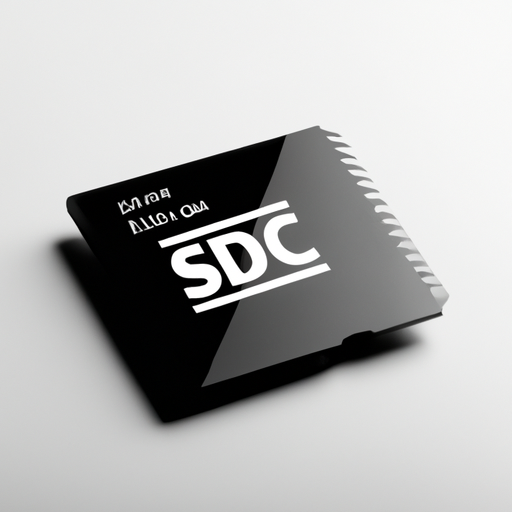Overview of DIACs and SIDACs
DIACs (Diodes for Alternating Current) and SIDACs (Silicon Diodes for Alternating Current) are essential semiconductor devices used primarily in AC power control applications. Their unique characteristics allow them to effectively manage and protect electrical systems, making them invaluable in various industrial and consumer applications.
Core Functional Technology
1. DIAC (Diode for Alternating Current)
- **Functionality**: A DIAC is a two-terminal device that remains in a non-conducting state until the voltage across it exceeds a specific breakover voltage. Once this threshold is reached, the DIAC switches to a conducting state, allowing current to flow in both directions.
- **Operation**: The symmetrical voltage-current characteristic enables DIACs to conduct in both positive and negative cycles of the AC waveform. This property is particularly useful for triggering TRIACs, which are used to control AC loads.
- **Applications**: Common applications include:
- Light dimmers
- Motor speed controls
- Over-voltage protection circuits
2. SIDAC (Silicon Diode for Alternating Current)
- **Functionality**: Similar to DIACs, SIDACs are designed to handle higher power levels and are optimized for applications requiring robust performance under high current conditions.
- **Operation**: SIDACs also have a breakover voltage, allowing them to switch between non-conducting and conducting states. They are particularly effective in clamping voltage spikes and providing over-voltage protection.
- **Applications**: Typical applications include:
- Surge protection devices
- Snubber circuits
- Triggering SCRs (Silicon Controlled Rectifiers)
Application Development Cases
1. Light Dimming Circuits
- **Description**: DIACs are integral to light dimming circuits, where they work in conjunction with TRIACs to control the brightness of incandescent bulbs. By adjusting the phase angle of the AC waveform, users can achieve smooth dimming.
- **Effectiveness**: This application minimizes flickering and enhances energy efficiency, providing a comfortable lighting experience.
2. Motor Speed Control
- **Description**: DIACs are employed in fan and small motor speed control applications. By manipulating the phase angle of the AC supply, the speed of the motor can be effectively controlled.
- **Effectiveness**: This method is cost-effective and improves motor efficiency while reducing operational noise.
3. Over-Voltage Protection
- **Description**: SIDACs are commonly used in surge protection devices to clamp voltage spikes, safeguarding sensitive electronic components from damage.
- **Effectiveness**: By rapidly switching to a conducting state during voltage surges, SIDACs protect downstream components, enhancing the reliability and longevity of electronic systems.
4. Triggering SCRs in Power Control Applications
- **Description**: SIDACs are utilized to trigger SCRs in various applications, including lighting control, heating elements, and motor drives.
- **Effectiveness**: Their ability to handle high currents makes SIDACs ideal for efficiently triggering SCRs, facilitating effective control of high-power devices.
5. Snubber Circuits
- **Description**: In power electronics, SIDACs are used in snubber circuits to protect against voltage transients caused by inductive loads.
- **Effectiveness**: This application helps extend the lifespan of switches and other components by absorbing voltage spikes, thereby improving overall system reliability.
Conclusion

DIACs and SIDACs are versatile and effective components in AC power control and protection applications. Their ability to switch states based on voltage thresholds allows for efficient dimming, motor control, and surge protection. As technology continues to evolve, the integration of these devices into more complex systems enhances their effectiveness and expands their application range, making them critical in modern electronic designs.
Overview of DIACs and SIDACs
DIACs (Diodes for Alternating Current) and SIDACs (Silicon Diodes for Alternating Current) are essential semiconductor devices used primarily in AC power control applications. Their unique characteristics allow them to effectively manage and protect electrical systems, making them invaluable in various industrial and consumer applications.
Core Functional Technology
1. DIAC (Diode for Alternating Current)
- **Functionality**: A DIAC is a two-terminal device that remains in a non-conducting state until the voltage across it exceeds a specific breakover voltage. Once this threshold is reached, the DIAC switches to a conducting state, allowing current to flow in both directions.
- **Operation**: The symmetrical voltage-current characteristic enables DIACs to conduct in both positive and negative cycles of the AC waveform. This property is particularly useful for triggering TRIACs, which are used to control AC loads.
- **Applications**: Common applications include:
- Light dimmers
- Motor speed controls
- Over-voltage protection circuits
2. SIDAC (Silicon Diode for Alternating Current)
- **Functionality**: Similar to DIACs, SIDACs are designed to handle higher power levels and are optimized for applications requiring robust performance under high current conditions.
- **Operation**: SIDACs also have a breakover voltage, allowing them to switch between non-conducting and conducting states. They are particularly effective in clamping voltage spikes and providing over-voltage protection.
- **Applications**: Typical applications include:
- Surge protection devices
- Snubber circuits
- Triggering SCRs (Silicon Controlled Rectifiers)
Application Development Cases
1. Light Dimming Circuits
- **Description**: DIACs are integral to light dimming circuits, where they work in conjunction with TRIACs to control the brightness of incandescent bulbs. By adjusting the phase angle of the AC waveform, users can achieve smooth dimming.
- **Effectiveness**: This application minimizes flickering and enhances energy efficiency, providing a comfortable lighting experience.
2. Motor Speed Control
- **Description**: DIACs are employed in fan and small motor speed control applications. By manipulating the phase angle of the AC supply, the speed of the motor can be effectively controlled.
- **Effectiveness**: This method is cost-effective and improves motor efficiency while reducing operational noise.
3. Over-Voltage Protection
- **Description**: SIDACs are commonly used in surge protection devices to clamp voltage spikes, safeguarding sensitive electronic components from damage.
- **Effectiveness**: By rapidly switching to a conducting state during voltage surges, SIDACs protect downstream components, enhancing the reliability and longevity of electronic systems.
4. Triggering SCRs in Power Control Applications
- **Description**: SIDACs are utilized to trigger SCRs in various applications, including lighting control, heating elements, and motor drives.
- **Effectiveness**: Their ability to handle high currents makes SIDACs ideal for efficiently triggering SCRs, facilitating effective control of high-power devices.
5. Snubber Circuits
- **Description**: In power electronics, SIDACs are used in snubber circuits to protect against voltage transients caused by inductive loads.
- **Effectiveness**: This application helps extend the lifespan of switches and other components by absorbing voltage spikes, thereby improving overall system reliability.
Conclusion

DIACs and SIDACs are versatile and effective components in AC power control and protection applications. Their ability to switch states based on voltage thresholds allows for efficient dimming, motor control, and surge protection. As technology continues to evolve, the integration of these devices into more complex systems enhances their effectiveness and expands their application range, making them critical in modern electronic designs.








